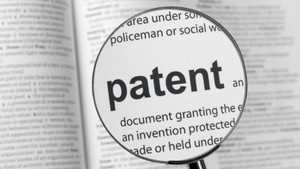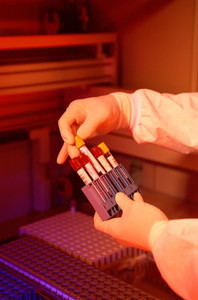Additional information on biosimilars and biotherapeutics have been published in Europe.
Improving understanding of biotherapeutics and biosimilars
Biosimilars/General
|
Posted 21/09/2018
 0
Post your comment
0
Post your comment

On 13 September 2018, the European Medicines Agency (EMA) and the European Commission published new material, including an animated video for patients that explains key facts on biosimilars and how EMA works to ensure that they are as safe and effective as their reference biologicals. The video is available in eight European languages: Dutch, English, French, German, Italian, Polish, Portuguese and Spanish.
In addition, EMA published translations of the biosimilar guide for healthcare professionals into Dutch, French, German, Italian, Polish, Portuguese and Spanish. The guide, which was first made available in English in 2017 [1], provides healthcare professionals with comprehensive and easily understandable information on both the science and the regulation underpinning the use of biosimilars.
These newly published materials complement the Questions & Answers on Biosimilars for patients, which was published in 23 EU languages in 2017 [2].
On 29 June 2018, the European Directorate for the Quality of Medicines and Healthcare (EDQM) announced that it had published a new section dedicated to biotherapeutics on its website. The new biotherapeutics section on the EDQM website summarizes European Pharmacopoeia (Ph. Eur.) Commission activities and achievements in this field. In addition to clarification of the role of Ph. Eur. monographs in the biosimilars regulatory pathway, it describes the recently concluded P4-BIO pilot phase and the ongoing pilot phase on monoclonal antibodies (MAB pilot phase), explaining the strategy followed by the Ph. Eur. when setting requirements for the quality of this important class of biotherapeutics. It also describes various levels of flexibility integrated into Ph. Eur. texts, including those introduced recently to address the structural complexity, heterogeneity and compound diversity derived from different manufacturing processes of complex biotherapeutics.
Ph. Eur. is Europe’s official pharmacopoeia and is legally binding in 37 European countries, including the European Union (EU) Member States. It lays down common, compulsory quality standards for all medicinal products in Europe [3].
Related article
Building confidence in biosimilars
References
1. GaBI Online - Generics and Biosimilars Initiative. Launch of biosimilars info for healthcare professionals [www.gabionline.net]. Mol, Belgium: Pro Pharma Communications International; [cited 2018 Sep 21]. Available from: www.gabionline.net/Reports/Launch-of-biosimilars-info-for-healthcare-professionals
2. GaBI Online - Generics and Biosimilars Initiative. EC publishes biosimilar Q&A document for patients in 23 languages [www.gabionline.net]. Mol, Belgium: Pro Pharma Communications International; [cited 2018 Sep 21]. Available from: www.gabionline.net/Biosimilars/General/EC-publishes-biosimilar-Q-A-document-for-patients-in-23-languages
3. GaBI Online - Generics and Biosimilars Initiative. The European Pharmacopoeia monographs for biotherapeutic products [www.gabionline.net]. Mol, Belgium: Pro Pharma Communications International; [cited 2018 Sep 21]. Available from: www.gabionline.net/Biosimilars/Research/The-European-Pharmacopoeia-monographs-for-biotherapeutic-products
Permission granted to reproduce for personal and non-commercial use only. All other reproduction, copy or reprinting of all or part of any ‘Content’ found on this website is strictly prohibited without the prior consent of the publisher. Contact the publisher to obtain permission before redistributing.
Copyright – Unless otherwise stated all contents of this website are © 2018 Pro Pharma Communications International. All Rights Reserved.
Source: EDQM, EMA
Research
Reaching ESG goals in pharmaceutical development
What is the future for the US biosimilar interchangeability designation
News
FDA approves six denosumab biosimilars
EMA recommends approval for four biosimilars targeting three therapies
Most viewed articles
The best selling biotechnology drugs of 2008: the next biosimilars targets
Global biosimilars guideline development – EGA’s perspective
Related content
Samsung Bioepis wins Pyzchiva case; Regeneron patent rulings threaten foreign biosimilars
Chinese biosimilars go global: growth, partnerships, and challenges
Stelara biosimilars enter US market with 85% discount in 2025
IFPMA publishes position on pharmacy-mediated substitution for biosimilars
Samsung Bioepis wins Pyzchiva case; Regeneron patent rulings threaten foreign biosimilars

Biosimilars/General Posted 30/07/2025
Chinese biosimilars go global: growth, partnerships, and challenges

Biosimilars/General Posted 30/04/2025
IFPMA publishes position on pharmacy-mediated substitution for biosimilars

Biosimilars/General Posted 21/03/2025
The best selling biotechnology drugs of 2008: the next biosimilars targets







Post your comment